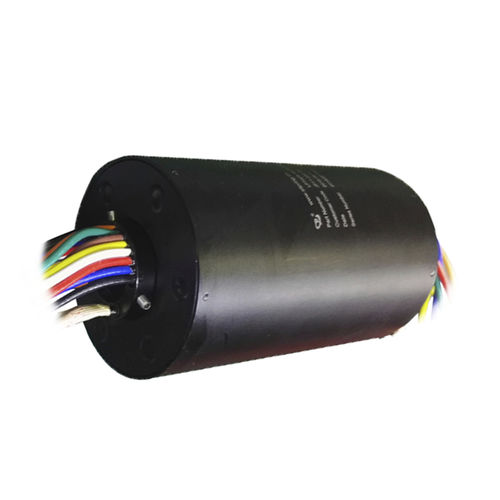A High Temperature Thermocouple Slip Ring ——150℃ working temperature
As for internal structure, rings for thermocouple signal transmission are completely segregated from those for power transmission. Also, temperature segregation handling is done in thermocouple signal passages. Taking into account the characteristics of friction mechanics, material science and electrical science, a reasonable design is made to guarantee a stable temperature in all contacts of the through bore slip ring. Through a minimal error control of different contacts, a reliable transmission in a high temperature of 150℃ is feasible.
Features
◆ Circuits: 16*5A, 2 pairs*K Thermocouple Signal
◆ Voltage: 24VDC/220VAC
◆Dielectric Strength: 500VAC@50Hz (Power), 300VAC@50Hz (Signal)
◆Insulation Resistance: ≥500MΩ@500VDC (Power), ≥500MΩ@500VDC (Signal)
◆ Contact Resistance Fluctuation Value: ≤70mΩ (in 50 rpm)
◆ Working Speed: 0~60rpm
◆ Contact: Precious metal
◆ Housing: Aluminum alloy
◆ Hole Diameter: 25.4mm
◆ Working Temperature:0~150℃
◆ Humidity: ≤60%RH
◆ Protection Grade: IP51


